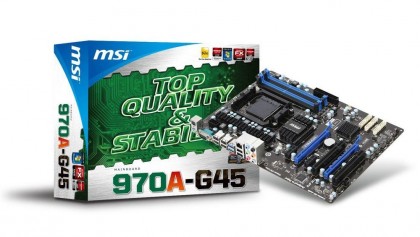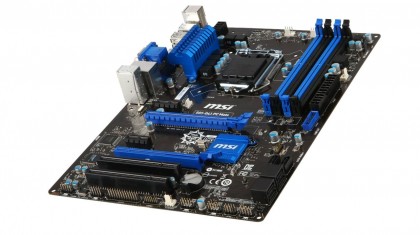Build it: The best gaming PC under £500
Piledriver faces Devil's Canyon
So we end our journey with just over £230 (around $342) (assuming you opt for Nvidia) to spend on the processor and the motherboard. Go for an ATX model as it will provide you with room to grow.

Let's start with AMD, possibly the easier of the two. At £158.64 (around $235), the AMD FX-8370 Black Edition is not the most expensive processor in AMD's desktop line-up. But it is the most powerful one that can run at 125W or less. It has eight cores, 8MB of cache, runs at 4GHz and has a TDP of, wait for it, 125W. Pair it with the MSI 970A-G45 motherboard at £44 (around $65) and you get a decent AMD rig (actually the best you can buy from them) for less than we had to spend. You will likely need a solid cooler for this little baby though.

The piece de resistance has to be the Intel bundle. We opted for the MSI B85-G41-PCMate ATX motherboard, a socket 1150 board with a B85 chipset. Not only does it have four USB 3.0 ports, it also has four DDR3 memory slots. A real bargain at £52.54 (aorund $77). Which leaves us with about £180 for the CPU, which will have to be the Core i5-4690K at £173 (around $257), Amazon's current best-selling processor and an absolute beast of a processor. Based on Devil's Canyon, it has four cores, comes with a heatsink/fan, clocks at up to 3.9GHz, has 6MB cache and a TDP of 88W, and oh, is also unlocked.
One thing that immediately jumps out is how late AMD are to the game. Other than price cuts and some minor improvements, it looks as if the company has given up on the enthusiast market almost completely. The FX 9590, a 220W CPU, actually being more of a swansong than anything else. Intel's K-series runs circles around anything AMD currently has on the market.
So there you have it – a sub-£500 (around $743) build based on either Intel or AMD and using either Nvidia or ATI.
For the sake of simplicity, I have assumed the following:
- You know how to build a PC
- You have the necessary bits and equipment to build one
- You have an OS to hand
- You don't want to overclock at this stage
- You have other peripherals (mouse, keyboard, monitor, cables etc)
- You plan to recycle some components (fans etc)
Also why not read the following features related to building your own PC...
Sign up for breaking news, reviews, opinion, top tech deals, and more.

Désiré has been musing and writing about technology during a career spanning four decades. He dabbled in website builders and web hosting when DHTML and frames were in vogue and started narrating about the impact of technology on society just before the start of the Y2K hysteria at the turn of the last millennium.